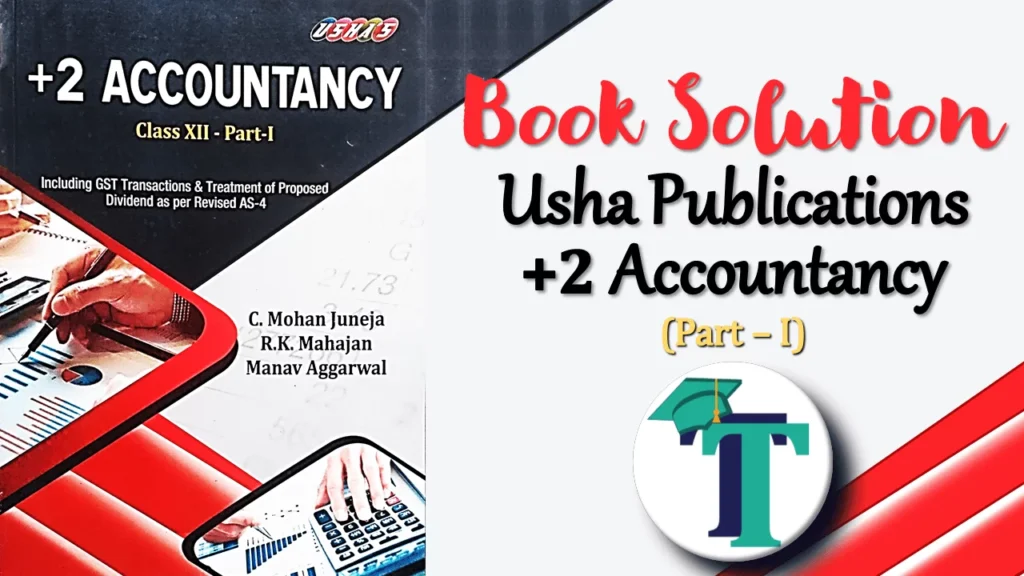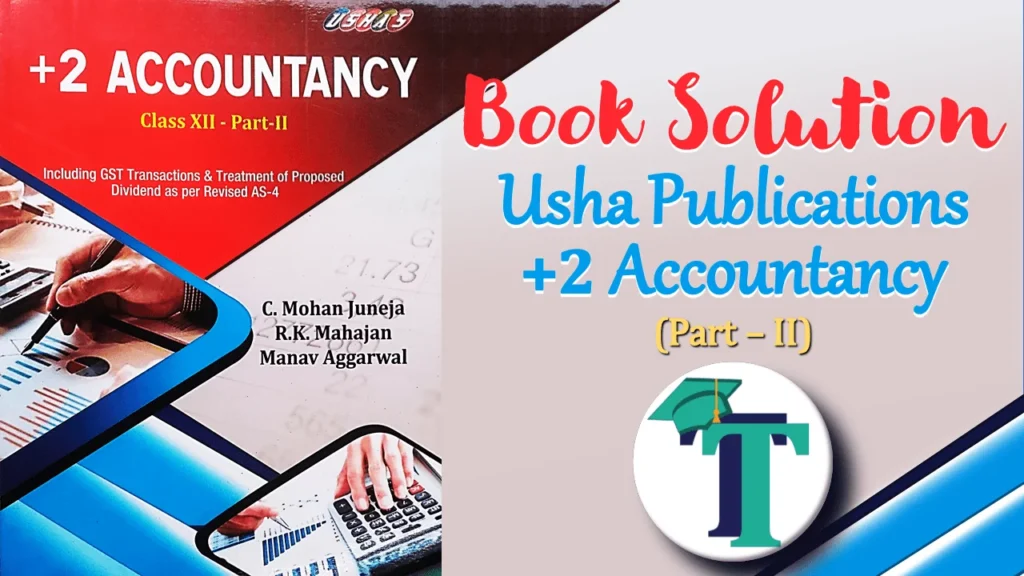
Advertisement
In this article, you can check out the syllabus for the class 12 accountancy II – PSEB and you can also download the syllabus in the PDF Format.
CLASS-XII ACCOUNTANCY- II (COMMERCE GROUP& HUMANITIES GROUP)
Time: 3 Hrs. Theory: 80 Marks Project work/Practical: 15 Marks, IA: 05 Marks
Total: 100 Marks SYLLABUS (THEORY)
PART-I
UNIT 1: FINANCIAL STATEMENTS OF NOT-FOR-PROFIT ORGANIZATIONS.
- Meaning, Basic Concepts
- Receipts and Payments Account: Features and preparation.
- Income and Expenditure Account: Features, Preparation of income and expenditure account and balance sheet from the given receipt and payments account with additional information.
UNIT 2: ACCOUNTING FOR PARTNERSHIP FIRMS
- Partnership: Features, Partnership Deed (Meaning, Contents, and Importance).
- Provisions of the Indian Partnership Act 1932 in the absence of a partnership deed.
- Final Accounts of Partnership: Fixed v/s Fluctuating Capital accounts, Division of Profit among Partners (excluding guarantee and past adjustments). Preparation of Profit and Loss Appropriation Account.
- Goodwill: Meaning, Nature, Factors Affecting and Methods of Valuation-Average Profits, Super Profits, and Capitalization.
Note: Interest on the partner’s loan is to be treated as a charge against profits.
Goodwill is to be adjusted through partners’ capital/current account or by raising and writing goodwill (AS 26).
ACCOUNTING FOR PARTNERSHIP FIRMS-RECONSTITUTION
Advertisement
UNIT 3: CHANGE IN THE PROFIT-SHARING RATIO:
- Change in Profit Sharing Ratio among the existing Partners- Sacrificing Ratio and Gaining Ratio.
- Accounting for Revaluation of Assets and re-assessment of Liabilities and Treatment of reserves and Accumulated Profits.
- Preparation of revaluation account and balance sheet.
UNIT 4: ADMISSION OF A PARTNER :
- Admission of a Partner: – Effect of Admission of Partner, Change in Profit Sharing Ratio, Accounting Treatment of Goodwill (as per accounting standard 26). Revaluation of Assets and re-assessment of Liabilities, Treatment of Reserves and Accumulated profits, Adjustment of Capital Accounts and Preparation of balance sheet.
UNIT 5: RETIREMENT AND DEATH OF A PARTNER :
- Effect of Retirement/Death of a Partner on change in Profit Sharing Ratio, Treatment of Goodwill (As per AS 26),
- Treatment of Revaluation of Assets and re-assessment of liabilities,
- Adjustment of Accumulated Profits and Reserves. Adjustment of capitals accounts and preparation of balance sheet.
- Preparation of loan account of retiring partner. Calculation of deceased partner’s share of profit till the date of death.
UNIT 6: DISSOLUTION OF PARTNERSHIP FIRMS
- Dissolution of partnership firm: Meaning Dissolution of Partnership and partnership Firm,
- Types of dissolution of firm,
- Settlement of Accounts: Preparation of Realisation Account, Capital Accounts of partners and Cash/Bank Account (excluding Piecemeal Distribution, Sale to a Company and Insolvency of a Partners).
Note:
(i) If the realised value of tangible assets (i.e. Land & Buildings, Furniture, Stock etc) is not given, it should be considered as realised at book value itself.
- If the realised value of intangible assets (i.e Goodwill, Patents, Trade Marks, Computer Software etc) is not given, it should be considered as nil (zero value).
- In case, realisation expenses are borne by a partner, clear indication should be given regarding the payment thereof.
NOTE: Students may choose only one Part from Part II and Part III.
PART -II
UNIT-7: ACCOUNTING FOR SHARE CAPITAL
- Share and Share Capital: Meaning, Nature, and Types
- Accounting for Share Capital: Issue and Allotment of Equity and Preference Shares, Public subscription of shares – over subscription (pro rata adjustment of excess application money) and under subscription share.Issue of shares at Par and at Premium, calls in Advance and Calls in Arrears (excluding interest), Issue of Shares for Consideration other than cash.
- Accounting Treatment of Forfeiture and Re-issue of Forfeited Shares.
Note:- The term “Securities Premium Reserve Account” has been changed and now it is termed only “Securities Premium”.
UNIT 8: ACCOUNTING FOR DEBENTURES :
- Debentures: Meaning, Types of Debentures, Issue at Par, Premium, and at a Discount,
- Issue of Debentures for Consideration other than Cash, Debenture Issues as Collateral Security –concept, interest on Debentures. Writing of discount/loss on issue of debentures.Redemption of Debentures: -Methods, Lump sum Draw of lots.
- Creation of Debenture Redemption Reserve.
Note: Discount or loss on issue of debentures to be written off in the year debentures are allotted from Security Premium Reserve (if it exists) and then from Statement of Profit and Loss as Financial Cost (AS16).
Advertisement
Capital Reserve cannot be used for writing off Discount/Loss on Issue of Debentures.
UNIT 9: ANALYSIS OF FINANCIAL STATEMENTS
- Financial Statement of Company: Statement of Profit and loss and Balance Sheet in the prescribed form with major heading and sub heading (As per schedule III to the Companies Act, 2013).
Note:
Exceptional items, extraordinary items, and profit/loss from discontinued operations are excluded.
Forfeited Shares Account is not added either to subscribed and fully paid up or subscribed but not fully paid-up capital and is shown separately in Notes to Accounts as a last tem of Share Capital. In other words, Forfeited Shares Account is not added to Subscribed Capital but it is added to Share Capital.
- Financial Statement Analysis: – Meaning, Objectives, Importance, and Limitations.
- Tools for Financial Statements Analysis: – Comparative Statements, Common Size Statement. • Accounting Ratio: – Meaning, Objectives, Types and Computation.
- (a) Liquidity Ratio: – Current Ratio, Liquidity Ratio.
- (b) Solvency Ratio: – Debt to Equity Ratio, Total Assets to Debt Ratio, Proprietary Ratio and Interest Coverage Ratio.
- (c) Activity Ratio: Inventory Turnover, Trade Receivables Turnover Ratio, Trade Payables Turnover Ratio and Working Capital Turnover Ratio.
- (d) Profitability Ratio: – Gross Profit Ratio, Operating Ratio, Operating Profit Ratio, Net Profit Ratio and Return on Investment.
Note: Net profit ratio is to be calculated on the basis of profit before and after tax.
Advertisement
UNIT 10: CASH FLOW STATEMENT
- Cash Flow Statement: Meaning, Objectives and Preparation (As per AS-3 Revised) (Indirect Method only),
- Adjustments related to Depreciation and Amortisation, profit or loss on sale of assets including investments, Dividends (final and interim) and TaxBank overdrafts and cash credit to be treated as short term borrowings.
- Current investments to be taken as Marketable securities unless otherwise specified.
Note: Previous years’ Proposed dividend to be given effect, as per
prescribed in AS-4, Events occurring after the balance sheet date. Current years’ proposed dividend will be accounted for in the next year after it is declared by the shareholders.
OR
PART-III
UNIT 7: OVERVIEW OF COMPUTERIZED ACCOUNTING SYSTEM
- Concepts and Types of Computerized Accounting Systems (CAS)
- Features of a Computerized Accounting SystemStructure of a Computerized Accounting SystemSteps in the installation of CAS, preparation of chart of accounts, codification (Block, Mnemonic and Sequential codes) and hierarchy of account heads.
- Data Entry, Data Validation and Data Verification.
UNIT 8: USING COMPUTERIZED ACCOUNTING SYSTEM
- Introduction to Tally (Educational or any free version), Steps for its installation, Features of Tally.
- Screen components of Tally, Creation/Setting up of a company in Tally, Altering and Deleting a company in Tally.
- Adjustment Entries, Preparation of Financial Statements, Closing Entries and Opening Entries.
- Security of CAS and security features generally available in CAS (Students are expected to understand and practice the entire accounting process using an accounting package). TALLY ERP-9 (Educational Version)
UNIT 9: INTRODUCTION TO DBMS AND ELECTRONIC SPREADSHEET
- INTRODUCTION TO DBMS-Introduction and meaning of DBMS, Advantages and Disadvantages of DBMS.
Basic Concepts- Entities, Attributes, Identifiers and relationships. Planning and Designing of DBMS.
Components and Elements in DBMS (Only Theory) – Tables, Queries, Forms and Reports.
(B) INTRODUCTION TO ELECTRONIC SPREADSHEET –
- Concept and elements of an Electronic Spread Sheet (ES).
- Features offered by Electronic Spread Sheet.
- Main components of MS-Excel (Worksheet, Title Bar, Tool Bar).
- Cell Referencing- Relative, Absolute and Mixed Referencing.
- Basic Functions in Spreadsheet-
- Date and Time functions: – Today ( ), Now ( ), Year ( ), Month ( ), Day( ), Date( ).
- Mathematical Functions: – Sum ( ), Round ( ), Roundup ( ), Rounddown( ).
- Statistical Functions: – Count( ), CountA ( ), CountBlank( ), CountIf(), Rows(), Columns(), Average( ) , Max( ), Min( ).
- Logical Functions: – IF( ), AND( ), OR( )
UNIT 10: ACCOUNTING APPLICATION OF ELECTRONIC SPREAD SHEET
- Applications of Electronic Spread Sheet in Generating Accounting
- Information- Preparing Depreciation Schedule using SLN( ), SYD() and DDB() functionsPreparation of Loan Repayment Schedule using PMT( )Preparation of Payroll Statement/Salary BillPreparation of Students Marks sheet.
- Graphs and Charts for Business Data- Introduction, Types of
Graphs and Charts (Column Chart, Bar Chart, Line Chart, Pie Chart, Scatter Chart, Elements of Charts, Advantages of preparing Charts)
Practical work
Practical work is for those students who choose Part II of the syllabus.
Time: 1 ½ Hours Max Marks 15
- The syllabus of practical work is same as prescribed for the theory paper i.e. Part I and Part II.
- Practical Note book will consist of at least one comprehensive project and some short answer questions based on the prescribed syllabus.
- Division of Marks:
| 1 | Project Note Book | 3 marks |
| 2 | Total five questions of 3 marks each will be set. The students are required to attempt any three | (3×3) =9 marks |
| 3 | Viva Voce | 3 marks |
Division of Marks for internal assessment
| 1 | Book Bank | 2 marks |
| 2 | Average of periodic tests | 3 marks |
Practical is for those students who choose Part III of the syllabus.
Time: 1 ½ Hours Max Marks: 15
- The syllabus of practical work is the same as prescribed for the theory paper of part-III.
- Practical Notebook will consist of the entire practical performed in the computer laboratory based on the prescribed syllabus.
- Division of Marks:
| 1 | Practical Note Book | 3 marks |
| 2 | The students are required to perform any three practicals out of the given Five of 3 marks each. | (3×3)=9 marks |
| 3 | Viva Voce | 3 marks |
Division of Marks for internal assessment
| 1 | Book Bank | 2 marks |
| 2 | Average of Periodic Tests | 3 marks |
Download PDF
Download the PDF of the Syllabus for Class 12 Accountancy II – PSEB For Free of cost
Check out the Solution of Various Books of Accountancy for Class 12 For PSEB
Punjab School Education Board (PSEB) Solutions of Usha Publication.
If you’re a student enrolled in the Punjab School Education Board Class 12, it’s essential to explore a wide range of books to cover the syllabus thoroughly. While the prescribed textbooks are undoubtedly valuable, supplementing your studies with additional resources can enhance your understanding and knowledge. Consider checking out other books that align with the curriculum, offering different perspectives and insights on the subjects you’re studying. These supplementary materials can provide you with alternative explanations, practice questions, and examples that may aid in clarifying complex concepts. Moreover, exploring diverse sources can expose you to a variety of writing styles and viewpoints, fostering a broader understanding of the subjects. So, seize the opportunity to expand your learning by delving into other books that can complement your studies and contribute to your academic growth.
Advertisement



